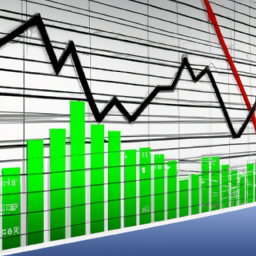
Economic Indicators: Understanding the Pulse of the Economy
Introduction
Economic indicators are vital tools used by economists, policymakers, and investors to assess the health and performance of an economy. These indicators provide valuable insights into various aspects of economic activity, allowing stakeholders to make informed decisions. In this article, we will explore the significance of economic indicators and discuss some key examples.
What are Economic Indicators?
Economic indicators are statistical data points that provide information about the overall state and trends of an economy. These indicators can be quantitative or qualitative and cover a wide range of economic activities, including employment, inflation, production, consumer spending, and international trade. By analyzing these indicators, economists can gauge the direction and strength of economic growth or contraction.
Types of Economic Indicators
1. Leading Indicators
Leading indicators are economic variables that tend to change before the overall economy starts to follow a particular pattern. These indicators are considered predictive in nature and can provide early signals of potential economic shifts. Examples of leading indicators include stock market performance, building permits, and consumer confidence surveys.
2. Lagging Indicators
Lagging indicators, as the name suggests, are economic indicators that change after the economy has already started following a particular trend. These indicators confirm or validate a trend that has already been established. Examples of lagging indicators include unemployment rate, average duration of unemployment, and corporate profits.
3. Coincident Indicators
Coincident indicators move in tandem with the overall economy and reflect its current state. These indicators provide a real-time snapshot of economic activity and are often used to confirm the current phase of the business cycle. Examples of coincident indicators include industrial production, retail sales, and GDP growth rate.
Why are Economic Indicators Important?
Economic indicators play a crucial role in understanding the performance and trends of an economy. Here are some reasons why they are important:
1. Assessing Economic Health
Economic indicators allow policymakers, economists, and investors to assess the overall health of an economy. By analyzing indicators such as GDP growth rate, employment figures, and inflation rates, stakeholders can determine whether an economy is expanding or contracting.
2. Predicting Economic Trends
Leading indicators provide valuable insights into potential economic trends. By monitoring indicators like consumer sentiment, stock market performance, and housing starts, economists can make predictions about the future direction of the economy. This information helps businesses and investors plan their strategies accordingly.
3. Formulating Monetary and Fiscal Policies
Governments and central banks use economic indicators to formulate monetary and fiscal policies. For instance, if inflation is rising, policymakers may decide to increase interest rates to curb spending and control prices. Economic indicators provide the necessary data to make informed decisions and manage the economy effectively.
4. Investment Decision-making
Investors rely on economic indicators to make informed investment decisions. By analyzing indicators such as interest rates, GDP growth, and consumer spending, investors can identify sectors or industries that are likely to perform well. This information helps them allocate their resources effectively and minimize investment risks.
Conclusion
Economic indicators serve as crucial tools for understanding the pulse of an economy. By analyzing these indicators, stakeholders can assess economic health, predict trends, formulate policies, and make informed investment decisions. Whether you are an economist, policymaker, or investor, understanding and interpreting economic indicators is essential for navigating the complex world of economics.